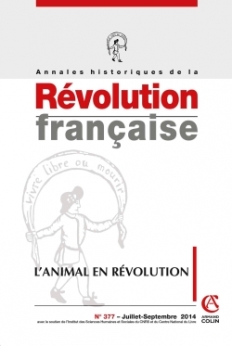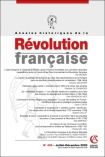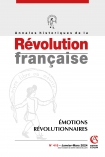
Annales historiques de la Révolution française n° 377 (3/2014)
Pour acheter ce numéro, contactez-nous
Recevez les numéros de l'année en cours et accédez à l'intégralité des articles en ligne.
In 1800, little was known about the great apes and their actual aptitudes. They were still called « orangs-outangs », a generic term taken from Malay designating « woodsmen ».The scientific monographs of the day reinforced an ambiguity in their representations. Like the natural man of the century of the Enlightenment, the ape remained an intermediate creature, identical to physical man with whom it shares sensibilities and excesses. It would be the task of functional anatomy to measure the extent of the apes’ intelligence, no less than to assess the conditions of its perfectibility and its place in hierarchy of living animals. The anthropomorphic depictions lastingly obscured all the symbolic borders between the realms of humans and animals. However, beginning in the years from 1820 to 1830, the discovery of adult orang would rectify this ambivalence. Arrested in its cerebral development at puberty, the ape underwent a regressive metamorphosis that caused its decline. While man rose, ennobled, the orang regressed towards a bestial existence. Fascination and repulsion never ceased to accompany this scholarly fiction.

